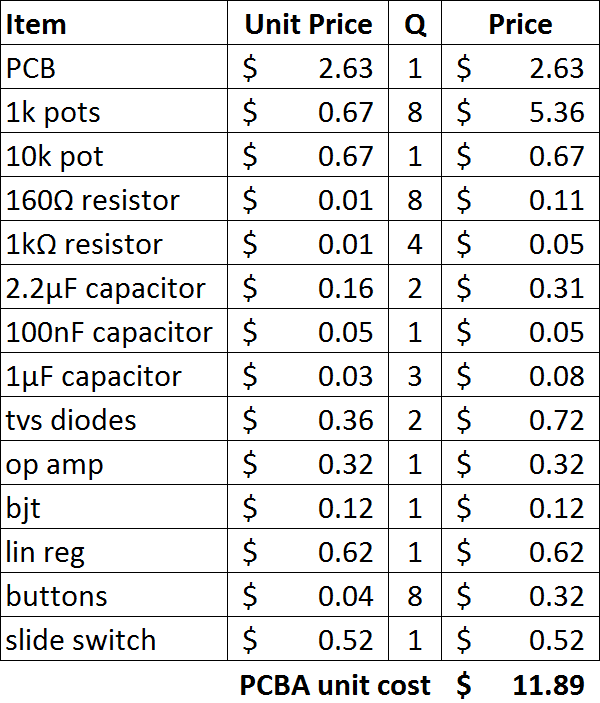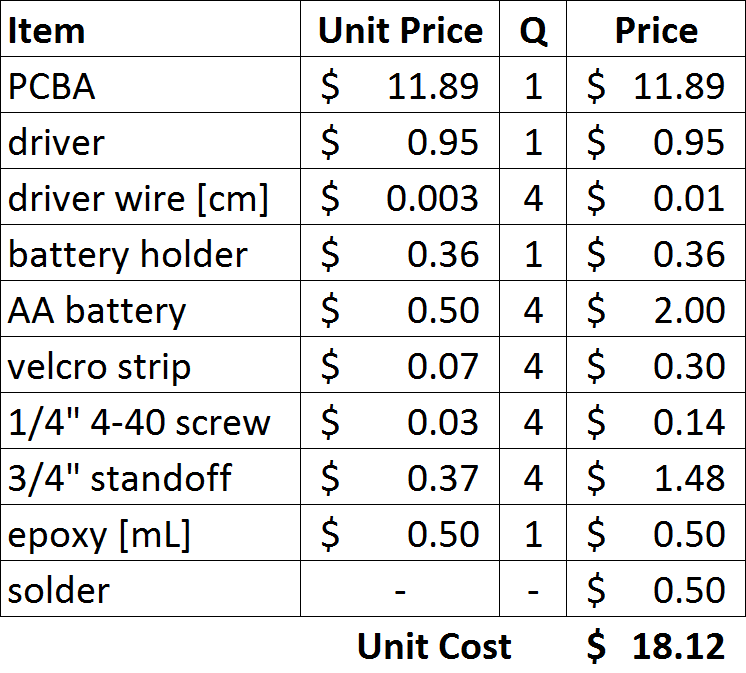All prices in Canadian dollars.
There's some issues with the following analysis.
- It's done for very small scale (10 units). Per unit prices get cheaper as quantity increases.
- Some of the costs are estimated. I didn't have the foresight to weigh all the parts of the PCB before soldering so I could measure the weight of the solder used. I also didn't measure the volume of epoxy I was using, or how much paper towel and rubbing alcohol I used to clean flux.
- After about the 5 hour mark, I stopped tracking my time so closely. I could see I was going to far exceeded my estimate of 2 hours that I needed if I was going to hit the price point I was aiming for. My best guess is that I spent 12 hours building 10.
With that said, here's the per unit cost calculation.
I broke it down into electrical and mechanical BOMs, with the electrical BOM finding the cost of the PCBA. The battery holder and driver weren't included since they required special assembly.
The first table is for the PCBA. The second is for the whole product.


So the total unit cost for materials is $18.12
I could see someone paying $30 for one of these, so that leaves $11.88 in profit. Since I spent about 1.2 hours on each one, I would be making $9.90/hour, which is less than minimum wage.
There's things missing from that number, like the time it takes to order parts, as well as the initial investment of time is designing the thing (the non-recurring engineering cost, NRE). This also doesn't take into account the packaging material or how much FedEx would charge me to ship it. There's also some time spent on customer support (taking orders and dealing with complaints). I would also have to spend some time testing each unit before shipping, although for this product it would probably be pretty quick.
I may also need to do some sort of burn in process, depending on the number of field failures/replacement units I have to send out.
For me to be motivated to do this, I'd have to be able to make around $20/hour. I estimate I'd have to spend around 2 hours to go from discrete parts to it being in the mail. That puts the sale price at $60 + shipping + tax, which is over twice what I think it's worth.
Conclusion
$60 is too expensive to consider selling to the public. The only way I can think to lower cost is to use an assembly house. They could do all the traditional assembly and I could spent 10 minutes/unit attaching the driver and battery holder. It would really depend on their quoted price.
 Adam Gulyas
Adam Gulyas
Discussions
Become a Hackaday.io Member
Create an account to leave a comment. Already have an account? Log In.